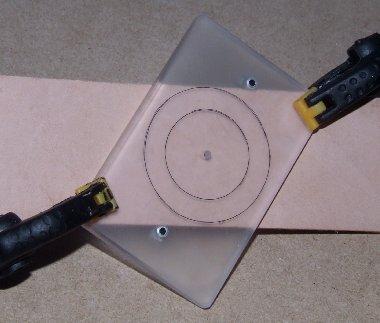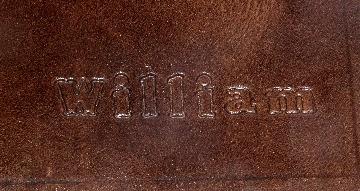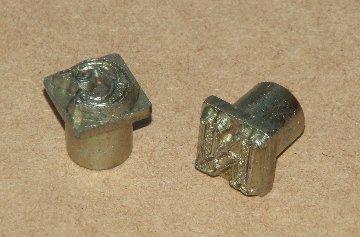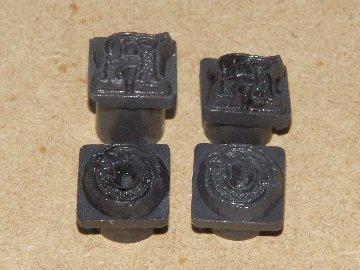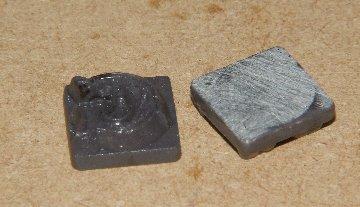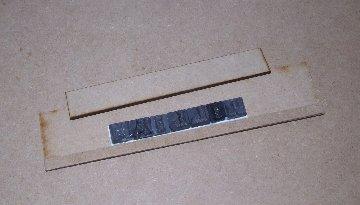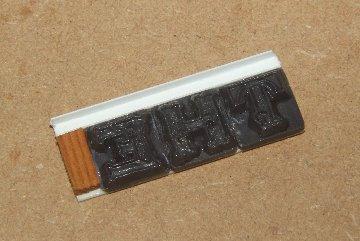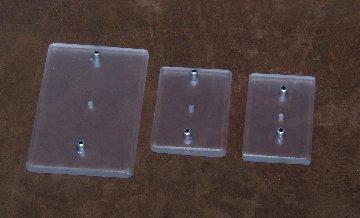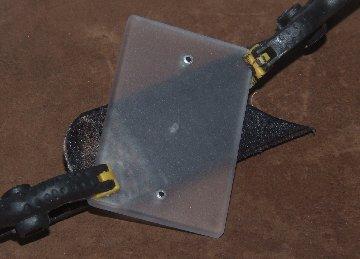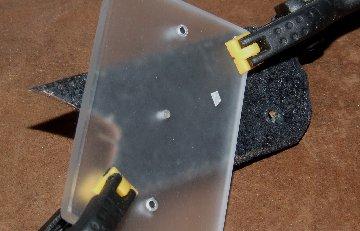-
Posts
5,931 -
Joined
Content Type
Profiles
Forums
Events
Blogs
Gallery
Everything posted by fredk
-

1760 - 1780 North Carolina - leather research
fredk replied to Simeon54's topic in Historical Reenactment
The Scots never had the Guilds that England had. Look also to the Ulster-Scots of that era. A great many of the Scots who went to the North American Colonies did not go direct from Scotland but from Ulster. The Scots settlers in Ulster, from approx 1605 to 1845 were known as the New Scots. They were, and still are, very Scottish in speech, habit and tradition. The point of a cobbler not knowing how to make a saddle is not true in this case. Scots, Ulster-Scots, and Ulster-Irish could, did and still do, turn their hand to whatever is required by their community. The blacksmiths would make knives, swords, shears, pikes as soon as make farm gate fittings. The farrier would make his own horse/ass/donkey shoes and fit them - they are not made by blacksmiths. Leatherworkers, even up to the 1970s, made shoes, horse tack, school bags, brief cases, and more. -
If you don't want to wire it, sew on an edge piece, folded over top to bottom, made of thin veg tan. Wet it after its sewn on, then let it dry with weights on it to keep if flat, or any shape you want. When dry seal it well. That should stiffen the brim and make it keep its shape but also be very flexible
-
1. for medieval type stuff and also for small modern items I sew up a leather draw-string bag. I have absolutely loads of off-cuts of upholstery leather which is suitable for these bags 2. for some modern items I buy in cotton material draw string bags, like these, https://www.ebay.co.uk/itm/100-Plain-Drawstring-Cotton-Bags-Xmas-Sack-Stocking-Storage-Laundry-Bag/143068706266?ssPageName=STRK%3AMEBIDX%3AIT&_trksid=p2057872.m2749.l2649 I have a stock of these in sizes from 8 x 10cm up to 40 x 50 cm. In these usually go my board games. Playing pieces in the very small bag and the boards fit into the larger bags Most shoulder type bags I've done have been for medieval history presenters and they've either collected from me or not required extra bagging. Only a few times I've wrapped a bag in tissue paper then boxed it. Getting a suitable sized box is a real nightmare so I prefer the cotton drawstring bags Although I've just mentioned bags, hat et al go into these cotton bags if the buyer is not going to wear or use the item. When I did some market stall selling I never once used any packaging for main leather goods. Small items like beads or card wallets occasionally went into a small paper bag, like the ones used in sweetie shops. https://www.ebay.co.uk/itm/White-Kraft-Food-Paper-Bags-White-Paper-Bags-Market-Sandwich-Food-Paper-Bags/392504666365?hash=item5b6319e8fd:g:jS0AAOSwGLZcctWy I keep a small stock of these plus some better ones with handles on them https://www.ebay.co.uk/itm/Kraft-Paper-SOS-Carrier-Bags-Brown-or-White-with-Flat-Handles-Takeaway-Gifts/152603517592?hash=item2387e0e298:g:Z6gAAOSwBPNXSG-c Although that link will hi-lite brown bags, white ones are better looking for our stuff hth
-
Please give me more info on your actual requirements and I can suggest certain bags in better detail
-
'Astonish' is available in most Home Bargains shops. About £1 for 750ml. Its a water thin acrylic varnish meant for floors. Its exactly the same as 'K;ear', Future' and 'Pledge with Future shine', only a lot cheaper. I use it as sealer on leather now as well as a varnish on a lot of hobby/craft items
-
Both are good but I prefer polyester. Mainly Gutermanns Top Stitch thread. Gutermanns because they've been supplying thread to the auto industry for over 100 years. If its good enough for BMW, Mercedes et al its good enough for me.
-
To me thats even more reason to just have about 5 sq feet of thin leather on hand. Two pieces for a sheath would be 1/2 sq ft, so 5 sq ft would do 8 to 10 sheaths, 5 sq ft would cost $20 to $25 or so, a recoverable cost.
-
My thoughts again. Time is money. If doing just the very occasional inlay its ok to take the time to just skive a piece of leather down. If its going to be a regular offering, let the tannery do the work. Buy in thin leather. Have it on hand. Laminate the inlay within the thinner leather. The thinner leather is often a good bit cheaper than the thicker, even when using two pieces of the thinner to one of the thicker All these Heath-Robinson set ups to skive a piece of leather can't beat a skiver built for the purpose. A 6 inch wide bench mount skiver costs as little as £100.($130) At $15 per hour pay say, it works out cheap. By the time you've mounted a piece of leather up safely, set up your planer you can have had several pieces of leather thru that bench skiver or have cut a year's worth from a thin leather Do you buy in 3/4 inch thick steel to reduce it to 1/8 inch for blades? (just sizes to illustrate the point), No, you buy in 1/8 inch. So you'll buy in to use 2.4 to 3 mm for the sheaths. For inlay laminations you'll use 1.2 to 1.6 mm, buy that and have it on hand, Stored carefully the leather lasts a long time. I'm currently using some 3.5mm Water Buffalo hide I bought about 15 years ago. Its darkened slightly over the years but its still perfectly good Edited to add PS. In the picture above for the video imo that is the wrong use for a French Skiver. Its for edges and small areas. For larger areas the Super Skiver is the better tool https://tandyleather.world/products/super-skiver?_pos=1&_sid=685be2ee6&_ss=r
-
If this is the type you are looking for; I made my own basic one over 20 years ago but I bought a smaller one a couple of years ago. It cost me all of about £10 https://www.ebay.co.uk/itm/Leather-Working-Desktop-Vise-Hand-Lacing-Stitching-Sewing-Pony-Horse-Wood-Clamp/133093839308?epid=5029623263&hash=item1efd02d1cc:g:mB0AAOSwES1cowY6
-
I use this for skiving the ends of belt straps. It will cope with up to about 60mm wide This might do strips wide enough for sheaths. You can buy it from about £25 to £95 depending on the seller. Mine cost me £28
-

Newbie interested in getting into leatherworking
fredk replied to rdhays2000's topic in Member Gallery
I agree. Black is one of the hardest of dyes to get right and not get it rubbing off -

Newbie interested in getting into leatherworking
fredk replied to rdhays2000's topic in Member Gallery
First thing to tell us is, where in the world you are. With hat info we can gear our answers to you -
a most excellent idea. I have that set you speak of and have the same problem as you, getting enough pressure for it to make a decent impression I'll have to think a thunk to see if this idea can be adapted to my press Just a thought; if you bend the mounting bar at a slight angle it will make the roller fitting at an angle and I think the leather will feed easier under it
-
Now with improvements I used the divider point to scribe a line at about 12mm ( 1/2 inch) and 20mm ( 3/4 inch) from the centre. I went over the lines a few times to make it deep enough to take some black paint. I painted the whole line then wet sanded the excess off. Its on a 40mm wide strap in the picture. It doesn't look even because of its angle in the photo but in the hand the 20mm circle touches both sides of the strap. The black lines are neat too but show kinda broken up due it being a digital photo Thanks, @chuck123wapati, I was over thinking the problem. A simple scribed line does the job well. K.I.S.S. it is
-
I was thinking - I used a small sized drawing compass to mark the distance of the centre hole from the outer ones, then I drilled a 0.8mm pilot hole. I could put one compass point in that small hole and scribe a line, or lines, with the the other compass point ? Would that work? Actually, that compass point may fit tight in that centre hole now. I'll maybe try it out later
-
On this, No, I'd not put a rivet If you really wanted to, use a fancy one like a dome head in gunmetal grey or black, not brassy 'gold' or nickle 'silver' dome head rivets; https://www.ebay.co.uk/itm/Domed-single-cap-rivets-9-mm-10-mm-or-12-mm-cap-diameter-Studs-Sewing-Leather/181283064215?hash=item2a35500997:g:XKYAAOSwl~ZbPKcH Where both sides of the rivet can be seen I don't like the unfinished look of the stem base on these so I replace the stem with one from a double head rivet or use a fancy Chicago Screw; https://www.ebay.co.uk/itm/10x-Floral-Round-Head-Stud-Leather-Belt-Wallet-Bag-Chicago-Screw-Back-Nail-Rivet/112504603559?var=412892744784
-
ah, there the leather work has the advantage. As you make the knife sheaths you can knock up some small personal items for wifey, then she'll forgive you and luv you even more,
-
yup, but I'm not clever enough to have worked that bit out yet yup, k.i.s.s is best, especially for me
-
Its a standard polyurethane casting resin I use for these. There are basically two types of resins, polyurethane and polyester. Polyester is the type used with glass fibre for laminating, boat building etc. It can be used for moulding as well but its a harder more brittle plastic when hard. Polyurethane is softer, as in very much less brittle. Its commonly used to make parts for plastic models. It can be cut, filed and sanded easier with less chance, ie none, of the part breaking or cracking. So far I've not used any of these long enough to know of their longevity. As they are harder than wet leather they should last a good while I forgot to say I use a hand-press to impress the letters into leather. However, moderate thumping with a mallet does not seem to harm them and, btw, I'm only presenting an idea of making up extra letters for stamping using resin. The use of resin for a stamp is not new, Bunkhouse Tools makes leather stamps in polyurethane resin for use in a press
-

stop toolbag from flattening when riding
fredk replied to FleurFeroce's topic in Motorcycles and Biker Gear
Cut some thick wood to the shape of the ends. Make them a very tight fit. Fit them in and keep them there with glue to the ends and small upholstery nails to the main body -
When I worked with a truck rebuilding company the draftsman used to put his paper through the laser printer 3 or 4 times to dry it, sometimes more on a humid day. Then when it was printed it was 100% spot on. And when you are working with the tight tolerances used in vehicle construction you need accuracy. I still use that method when I need to.
-
When faced with one alphabet set and needing numerous copies of certain letters in the past, for one-off stamping I took a mould of the required letter, and made a rough copy to use as the 'spacer' eg For the name William I copied the i and L and stamped each letter as I went using the copies just as spacers My current project requires me to stamp a sentence 5 words long, of 18 letters plus spaces. Maybe 20 or even 40 times. Get a stamp made? no way hose-ay. The sentence will be about 35 cm / 14 inches long. Too big for one stamp or even several, and expensive. I got out the alphabet I'm going to use As I have plenty of moulding rubber I made moulds of the required letters. Initially I thought, if I do the copies the same size, not only will they be spacers but stamps in their own right. Thus the moulds were made deep As I was doing this I had a 'eureka' light-bulb moment. I made moulds of 24 of the 26 letter stamps. I left out X and Z, for now and started casting copies With the moulds I can cast multiple copies of each letter, here R and O Never worry about that un-even sized post on the back, it was cut away and wet sanded smoother. They've ended up like 3-dimensional Scrabble letter squares (mmmm, now theres an idea! ) The next step of the plan. I made a basic jig out of MDF. A 3mm high fence along one edge keeps the letter squares all aligned. I can use another piece of MDF to keep the squares tight in place. I put the letter squares on it and use a drop of superglue (aka CA, or Krazy Glue?) to join them together. Although shown here letters up I actually do them letter down so they are all even on the working front-side Then the back side of letters are wet sanded to even them up, and a piece of moderately thick plastic card is epoxied to the backs, across all the letters Now I can make up full names or words as a block and stamp whenever its needed. Of the two names seen, William is #1 son and Kitty is #1 dottir so their names will be used often, as well as other names Proof it works As for my 5 word sentence. I went a bit further. I added a spacer to the top edge so I can set all the words against a hard straight edge and get a consistent space. On some words I added a small block of wood for inter-word spacing so I don't need to fuss about that either, its all pre-set. The main thing I have to remember is to place the letters in mirror, Care needs to be taken to align all the letters. It took a over a week to get all this sorted. Main loss of time was waiting for the rubber moulds to cure, 6 days. The resin for the copies is de-mouldable after 4 hours. I just pour some resin in the moulds when I'm at the moulding bench. But now the main work is done its just a matter of casting letters, cleaning them up and sticking them together. Overall, not a lot of time needed on that As I usually have lots of moulding rubber and moulding resin about this cost me very little. In fact the resin is an old pot which needs used up before it goes 'off'. However, a quick check of the cost of doing all this, I've moulded about 60 letters, has been about £8. Considering that that alphabet cost me £65 and I've never found another like it I think I'm on a winner. At regular price the casting resin is £8 for 500g. Each letter copy uses 2g of resin. Thats 250 letters for £8 or about £0.03 each. The rubber moulds, which cost about £6 to make, will make a few hundred copies before they wear out. I'm in the process of working on another couple of special stamps for this method and plans are a-foot for some of my other alphabets to get the same. If any of you want to try this and want more detailed info just ask away
-
There was a recent discussion on how to centre and align oval hole punches on belts I noticed that nobody mentioned this very simple jig thing. They are easy to make up out of scrap material. I made these three last night/evening as my originals have gone awol. Basically, a piece of clear or semi-clear perspex or acrylic sheet. Even a bit of board will do. Three holes drilled through it. The two at the ends take some sort of bar. The most important part is making sure the hole drilled between the two outer ones is dead centred between them. I used a bit of frosted perspex or acrylic. The pins in the outer holes is 1/8 aluminium tube, long enough to go thru the perspex (5mm) plus 5mm for going over the strap. The hole in the centre is a tight sliding fit for one of my scratch awls. I made three sizes as the larger one is bit OTT on small thin belts/straps, and one is devoted to my game boards An alternative to using a scratch awl to just mark the leather is to make that centre hole big enough for your favourite hole punch. Push it thru and mark the leather then come back and punch on the hole outline. In use, you simply slip over your belt/strap and swivel it until the pins touch the edge, then push a scratch awl or similar through the centre hole and you make a mark exactly in the centre of the strap width If you want to you can put a mark on the perspex so you can slide it along, align the mark with your previous hole and you then have the place for the new hole Look at the image below. The tab of tape is 2 cm from the awl hole. After making a mark with the awl if I slide the jig over until that bit of tape is over the mark then the jig is set for me to make another punching mark 2 cm from the first
-
More advice. Download some of the FREE instruction packs from the Tandy Library. Such as this one; https://www.leathercraftlibrary.com/product/1930/custom-knife-sheath-instructions There is a book called 'Hand Sewing Leather' by Al Stohlman but I can't find it in the library now but its available as a ready-printed copy thru Tandy shops: https://tandyleather.world/collections/books-patterns/products/the-art-of-hand-sewing-leather-book. You really can't go far wrong following the instructions in this book. or this simplified version: https://tandyleather.world/collections/books-patterns/products/lacing-stitching-for-leathercraft-book Al Stohlman was not only a master leather worker, artist and craftsman but his books are the number 1 go-to for instruction. Its good to have a selection of his books handy in the leather work room. You stick with us you 'ole Okie* and we'll see you right * I'm a Bohunk



